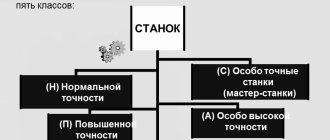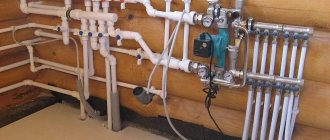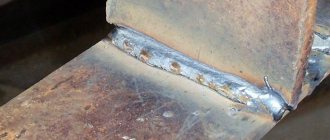Structure of a grain crusher
A household grain grinder consists of several units, the uninterrupted operation of which guarantees the proper operation of all equipment. Regardless of the dimensions, factory features and operational capabilities, the grain crusher consists of the following elements:
- support frame - a vibration-resistant metal structure on which the power unit and other factory components are supported;
- the engine is the basis of the design. The electric motor of the unit creates a force that is sufficient for high-quality crushing of grain crops and waste of natural origin. There are shredders on the market that are equipped with motors with a power of 1.5 kW and higher. A fairly powerful crusher is capable of processing large volumes of grain. However, it is important to remember that as power increases, the amount of electricity consumed by household equipment increases;
- casing for the power unit - protects the operator from burns and the engine itself from the ingress of grain residues into it;
- bunker – a metal container into which grain and waste are poured for processing;
- cutting knives - as a rule, are installed directly on the shaft of the standard power unit. These elements are responsible for uniform grinding of products of natural origin;
- reflector – in the factory design, located in the lower part of the working chamber;
- sieve - an element necessary for sifting the finished crushed grain;
- power cable with plug for connection to the electrical network.
The operating principle of the grain crusher is as follows:
- First, the operator pours grain into a metal bin;
- After connecting to the mains and pressing the start button, the electric motor is activated;
- Simultaneously with the rotation of the power unit shaft, the cutting knives are activated;
- During their circular movement, the working bodies evenly crush the grain and waste poured into the hopper;
- The crushed product passes through a sieve into a container prepared by the operator.
The grain crusher operates cyclically. That is, the grinding process is continuously repeated with each new stroke of the electric motor.
Types of home grain crushers - features of different types of equipment
Grain grinders can be domestic or industrial. Units of the second type are distinguished by their large dimensions, extremely high productivity and the ability to process coarse, unrefined product without harm to their working mechanisms.
A household shredder is a small-sized, narrow-profile equipment. It is capable of processing only pre-cleaned grain with a low percentage of husk. However, domestic crushers are a good option for households. They make it possible to obtain relatively large volumes of crushed grain without significant physical effort from their owners.
Depending on their design features, household and industrial shredders are divided into the following types:
- hammer - are distinguished by their simple design and ease of maintenance. The hammer crusher for grain is equipped with cutting elements located directly on the rotor, which rotates inside the standard receiving chamber;
- rotary – this type of household equipment is one of the most popular on the market. The impact crusher is equipped with durable metal cutting elements, which, during their rotation, hit the walls of the receiving chamber. As a result, the operator is able to obtain a large amount of carefully crushed grain and waste of natural origin;
- disk - in the design of this equipment for the home, the cutting elements are attached to the shaft using special built-in disks. This increases the strength of the unit and allows it to process solid products;
- roller – these units are designed not only for crushing, but also for grinding grain crops. The roller crusher is equipped with grooved rollers that can thoroughly crush the pre-wetted product.
Garden grain grinders are divided among themselves according to the type of working drive:
- manual - the simplest units. The manual crusher is suitable for processing small volumes of prepared grains. It is not equipped with an engine, so the cutting knives of the equipment are driven under the influence of the operator’s physical efforts. The manual type includes a coarse grain crusher, which is not capable of grinding grain into small fractions;
- pneumatic - most often used for crushing corn and other types of grains. This type of equipment works quite quickly and helps turn a whole product into a finished porridge that can be used to feed small poultry and young cattle;
- electric - units of this type are distinguished by their simplicity of design and relatively high performance. A home electric crusher works equally effectively with dry and wet grain.
Among farmers who own small and medium-sized farms, electric rotary choppers are the most popular. They can be sold with both standard and milling-turbine knives. The second option shows a higher speed and decent grinding quality, regardless of the condition and size of the grain.
What types of hammer crushers are there for feeding raw materials?
Based on the type of raw material supply, mechanisms are divided into double-rotor and single-rotor. The first type of device receives the substrate through a single hole, then the mass is passed into two sections of a mechanical mill, the units of which rotate in different directions.
Single-rotor crushers have many modifications. The units range from small in size to large industrial forms. Compared to multi-rotor mechanisms, single-rotor models have larger dimensions. In the second case, the loaded product enters directly into the mill cavity of the mechanism, so the devices are not prone to sticking of the processed powder mass.
Vertical crushers are used in the production of asbestos. The uniquely thought-out design ensures the release of the smallest substances.
Mechanism of operation. The loaded material is subjected to numerous blows from the first and then the second row of hammers. The degree of grinding is 1.3-1.8 mm, which is considered a low performance indicator of the device.
Reversible crushers or impact-reflective metal structures have a symmetrical frame. But in terms of service life, reversible units last much less and wear out quickly.
How to choose a grain crusher?
When purchasing a grain grinder, a farmer needs to carefully study its main parameters.
These include:
- purpose - this factor depends on the size of the farm in which the chopper will be used. For small farms, the best option would be to purchase small manual or pneumatic crushers, as well as make a homemade unit. Owners of medium and large farms should think about purchasing electric choppers, which are equipped with regulators for grain grinding size and other necessary functions;
- power - this parameter should be enough to process a sufficient amount of grain. The larger the number of cattle and poultry for feeding, the higher the power of the equipment should be;
- volumes of processed grain - the productivity of the crusher directly depends on its power. Shredders with high productivity will be effective in medium and large farms. Units with low productivity are best purchased to provide sufficient feed for a small number of livestock;
- the need for regular maintenance – every chopper needs timely maintenance. However, manual and pneumatic crushers for small farms require periodic maintenance much less frequently than electric units;
- Suitability for self-repair - the buyer must ensure that he has the opportunity to independently replace failed crusher spare parts. Otherwise, planned equipment repairs will be quite expensive;
- manufacturer - it is best to choose shredders from well-known brands. These include crushers of the Shmel, Elikor, Kolos and Khryusha brands. Any Chinese crusher will show high efficiency and speed only in the first year of its operation. After the warranty period expires, models from China quickly break down and do not demonstrate the required performance even after major repairs.
When choosing a household crusher, you need to carefully examine the attachment points of its mechanisms, the quality of the factory paint and the condition of the materials of its standard elements. Only after making sure of the high quality of assembly and reliability of the unit can we say that it will serve on the farm for as long as possible.
How to make a grain crusher with your own hands?
Most branded small-sized grinders are quite expensive, so in some cases it is easier and cheaper for farmers to make a grain crusher at home. Subject to careful preparation for manufacturing and the correct sequence of actions during assembly, the designer will be able to assemble a unit that, in terms of efficiency and performance, will be almost as good as proprietary models produced by well-known brands.
To make a grain crusher yourself, the manufacturer will need a diagram. The drawings should tell the designer in what order and in what way to fasten the elements and working mechanisms of the unit.
You can use an old working vacuum cleaner as the basis for a homemade shredder.
The procedure for manufacturing household equipment should be as follows:
- To assemble the shredder base, the manufacturer will need a sheet of thick plywood. From it you need to cut a square with dimensions of 30x30 cm. You need to install an electric motor from a vacuum cleaner on the finished base. In this case, the standard motor shaft should protrude approximately 4 cm downwards above the edge of the plywood;
- The cutting parts of a homemade shredder are pre-sharpened knives that will crush grain and waste. To assemble it, the manufacturer will need a steel plate 1.5 cm high, 20 cm long and 1.5 cm wide. Both front edges of the knife must be sharpened towards the axis. In the middle part of the element you need to drill a through hole, the diameter of which should correspond to the thickness of the electric motor shaft from the vacuum cleaner. The finished knife will need to be fixedly attached to the shaft;
- To make the working chamber of the crusher, it is necessary to use a metal strip no more than 6 cm wide and about 71 cm long. An additional centimeter of strip length is needed taking into account its fixation in the overall design of the homemade product. To install the grain grinder at the bottom of the working chamber, the manufacturer will need 3 wooden or metal rods;
- The mesh for a homemade crusher should be selected taking into account the purpose of the crusher. If the operator needs to process grain into fine flour, then the mesh cells should be of small diameter. If a farmer needs to grind feed, then the size of the cells must be increased. To collect crushed grain, you will need to install a clean bucket or any other container under the sieve;
- Finally, the manufacturer will need to install a receiving hopper for the crusher. It can be made from a large metal or plastic container. You need to install the bunker at the base of a homemade grain crusher. In order for the operator to regulate the supply volumes of natural products, a hole with a manual shutter must be made in the lower part of the tank.
A ready-made homemade grain crusher will show high efficiency when processing corn, oats, wheat and other grain crops. Depending on the power of the motor used by the vacuum cleaner, its productivity will range from 5 to 10 kg of product per 1 hour of operation.
Diagrams and drawings used
Now to the question of how to make a grain crusher yourself and what you will need for this.
There are various diagrams and drawings according to which a fairly effective grain crusher can be assembled with your own hands.
Popular solutions are:
- washing machine;
- Bulgarian;
- meat grinder;
- vacuum cleaner, etc.
At the same time, experts in this field note that the drawings and diagrams according to which a grain crusher is assembled from these devices with their own hands are not particularly different. But there is a difference in the chopping mechanisms used.
Using a washing machine as an example, the crusher will consist of:
- grain bin;
- housings;
- rotor;
- shaft;
- unloading bunker;
- pulley;
- V-belt;
- electric motor;
- frames and tables;
- loading and unloading dampers (valves).
It is also worth separately considering the issue of step-by-step production of grain crushers with your own hands from washing machines, grinders, meat grinders, etc.










